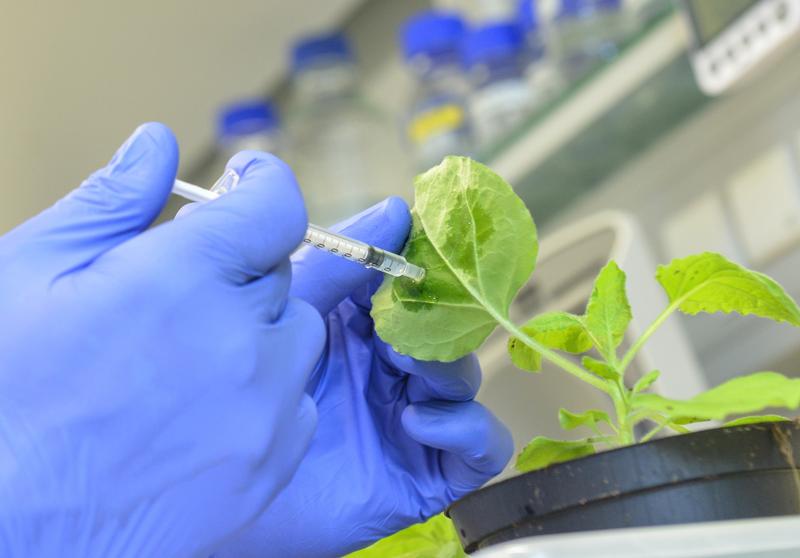| Feb 29, 2024 |
Scientists develop novel RNA- or DNA-based substances to protect plants from viruses
|
|
(Nanowerk News) Individually tailored RNA or DNA-based molecules are able to reliably fight off viral infections in plants, according to a new study by the Martin Luther University Halle-Wittenberg (MLU), which was published in the International Journal of Molecular Sciences ("Effective Antiviral Application of Antisense in Plants by Exploiting Accessible Sites in the Target RNA"). The researchers were able to fend off a common virus using the new active substances in up to 90 per cent of cases. They also developed a method for finding substances tailored specifically to the virus. The team has now patented the method.
|
|
During a viral infection, the plant’s cells are hijacked by the virus to multiply itself. Key products of this process are viral RNA molecules that serve as blueprints for the production of proteins. "A virus cannot reproduce without producing its proteins," explains Professor Sven-Erik Behrens from the Institute of Biochemistry and Biotechnology at MLU. For years, his team has been working on ways to disrupt this process and degrade the viral RNA molecules inside the cells.
|
 |
| The new active ingredients can be used to protect plants against viruses. (Image: Uni Halle / Markus Scholz)
|
|
In the new study, the researchers describe how this can be achieved using the so-called "antisense" method. It relies on short, synthetically produced DNA molecules known as antisense oligonucleotides (ASOs). In the plant cells, the ASOs direct cellular enzymes acting as scissors towards the foreign RNA so they can degrade it.
|
|
"For this process to work, it is crucial to identify a suitable target structure in the viral RNA which the enzyme scissors can attach to," explains Behrens. However, findings those accessible sites is really tricky: most potential target RNA molecules have a very complex structure, and they are also masked by other cell components. "This makes it even more difficult to attack them directly," says Behrens.
|
|
Behrens’ team faced this problem several years ago when they sought to use short RNA molecules (siRNA) to optimise a similar process in plants known as RNA interference. At the time, the researchers were able to develop a method for identifying suitable and accessible sites in viral RNA. The new study shows that the same approach can also be used for ASOs and that these active substances have a similar protective effect in plants.
|
|
"We were pleasantly surprised by the results because we were not sure if it would work. Even though RNA interference and antisense operate in a similar way, the active enzyme complexes are completely different. However, we were able to show that the RNA sites determined using our method are actually accessible for both processes," says Behrens.
|
|
The results were impressive: Experiments using the optimised ASO active substances showed that plants were protected against infection with a model virus in up to 90 percent of the cases.
|
|
The team has since patented the method. Behrens now hopes to fine-tune the approach. "ASOs are not only very precise, they are also relatively easy and inexpensive to produce. Similar active substances have also been used in humans for several years with few side effects. This is another argument in favour of their potential use in food," says Behrens. The biochemist is also looking into other applications of the newly developed methods, for example in fending off viruses that infect humans.
|

